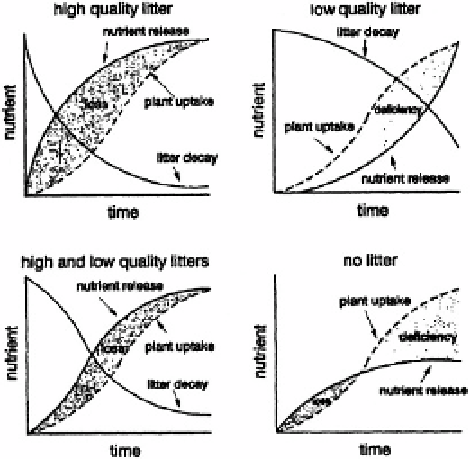Agriculture Reference
In-Depth Information
1.5
Basic processes within the biological systems of regulation
The structure and function of biological systems of regulation is illustrated in Figure IV.11.
Characteristic physical and biological structures form part of each of these systems and
are centres for the particular processes that characterise‚ respectively‚ the litter‚ rhizosphere‚
drilosphere and termitosphere systems (Sections IV.3 to IV.6). Three processes common
to all these systems are the synchronisation of nutrient release with plant root uptake‚
priming effects on organic matter and the functioning of micropredator foodwebs.
1.5.1
SYNCHRONY AND SYNLOCALISATION OF NUTRIENT ELEMENT
RELEASE AND UPTAKE
The activities and the intensities of the processes operating within the biological systems
of regulation determine the spatial and temporal patterns of nutrient release from decom-
posing resources. The restriction of nutrient-element release to locations and times
where they may be taken up by plants and other organisms is of great importance for
the conservation of nutrients in ecosystems where they are limited (Swift‚ 1986)
(Figure IV.13). It is hypothesised that‚ in natural ecosystems‚ this would occur in the
following ways: (i) by a synchronous stimulation of the plant and decomposer activities
by such high level determinants as climate; (ii) by plant responses to existing temporal
and spatial variation in decomposer activities through adaptive rooting strategies;
(iii) through the presence of a wide diversity of plants and decomposers with differing
patterns of spatial and temporal activity; and (iv) a broad diversity in the quality of
the decomposing resources‚ leading to extended temporal patterns of nutrient release
(see Section IV.2.6.3).


